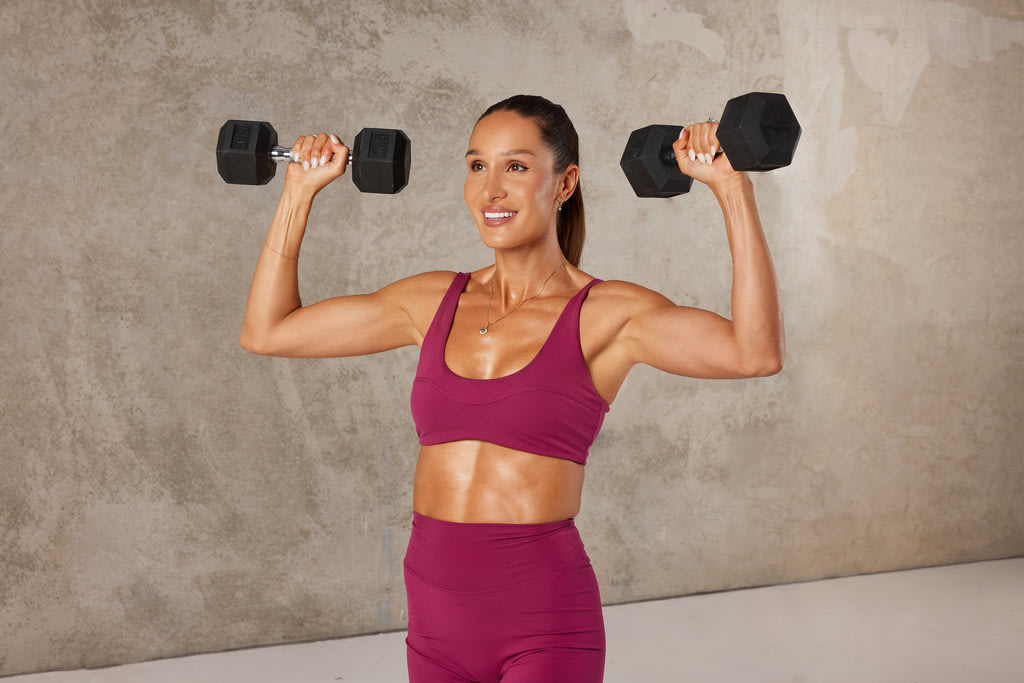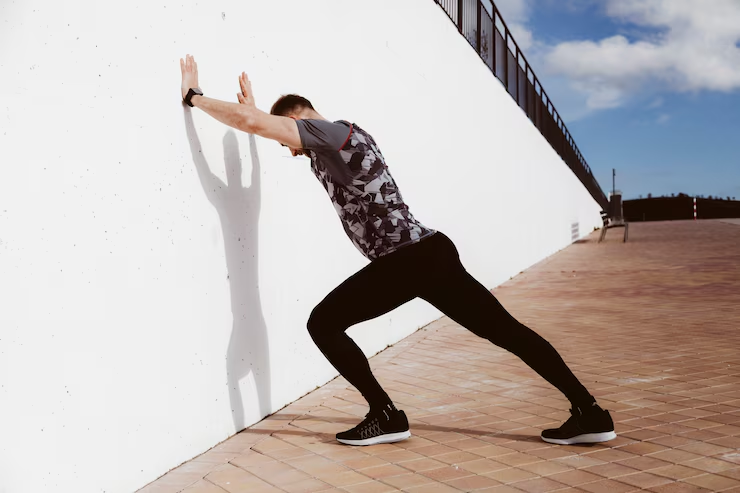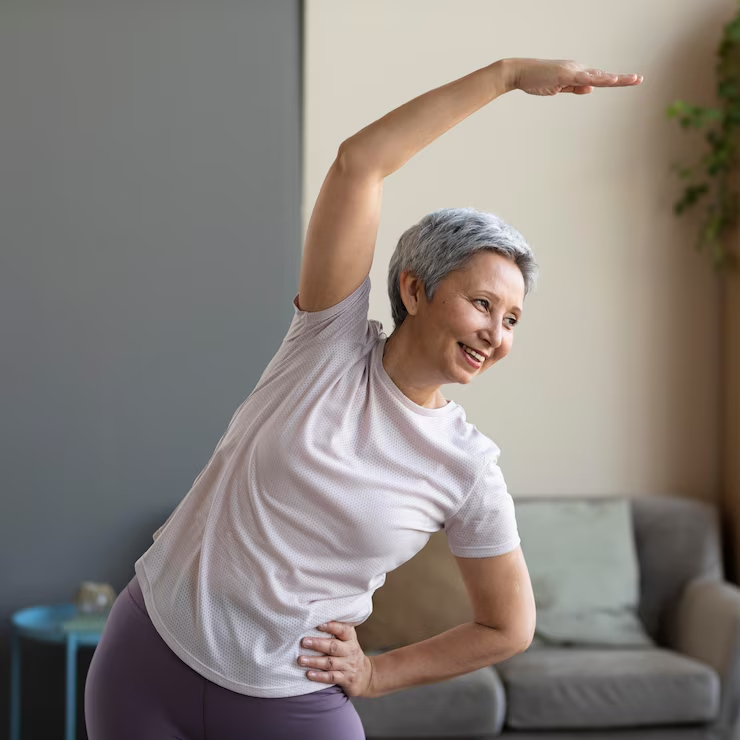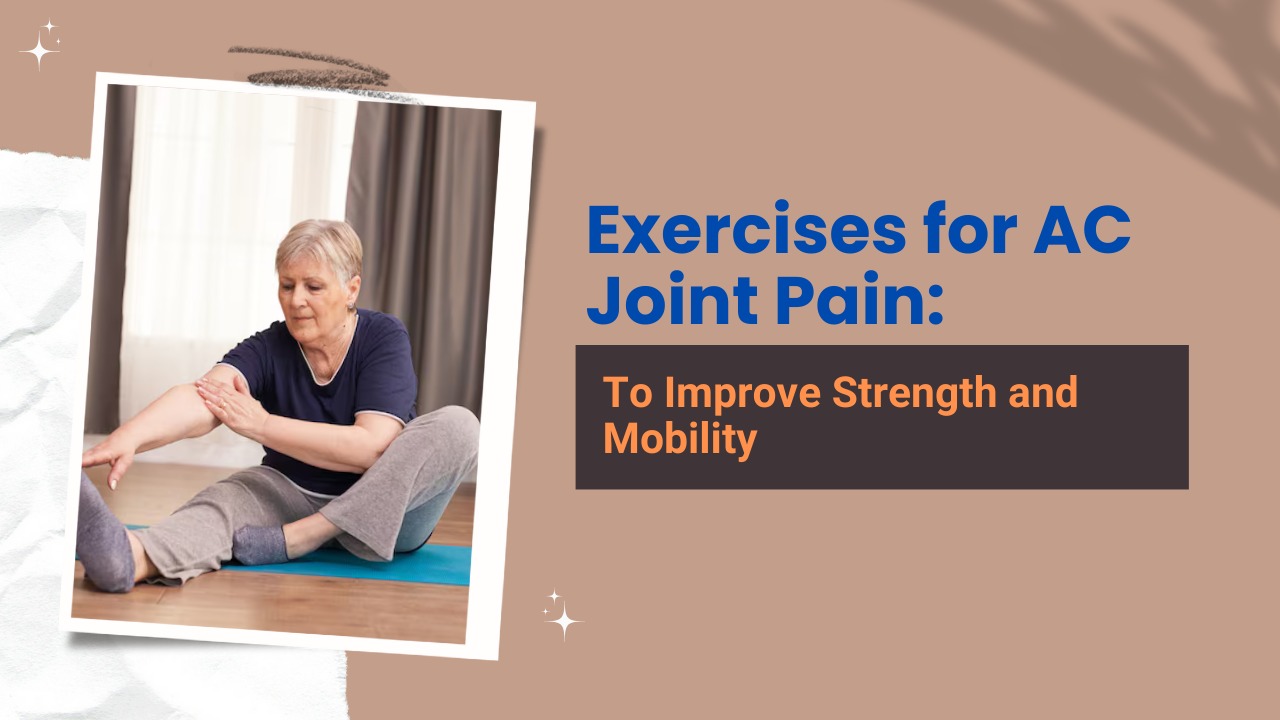Exercises for ac joint pain in the shoulder can significantly impact your daily activities, making it difficult to lift objects, reach overhead, or even get a restful night’s sleep. One of the most common culprits of shoulder discomfort is AC (acromioclavicular) joint pain, which occurs where the collarbone meets the top of the shoulder blade. This small joint is crucial for arm and shoulder movement.
AC joint pain can result from overuse, direct impact, arthritis, or repetitive strain, especially in athletes, weightlifters, or individuals recovering from a fall. Inflammation or damage to this joint often leads to swelling, tenderness, and reduced range of motion, making everyday tasks challenging.
Thankfully, targeted exercises for ac joint pain can help restore function and reduce discomfort. These exercises aim to strengthen surrounding muscles, stabilize the joint, and increase mobility. With consistent practice and proper technique, exercises for ac joint pain can support healing and prevent future flare-ups.
The good news? Exercise is one of the most effective ways to relieve AC joint pain, improve mobility, strengthen muscles, and speed up recovery. In this article, we will explore everything you need to know about AC joint pain and present the top 8 most effective exercises that are both safe and beneficial.

What Is the AC Joint ?
The acromioclavicular (AC) joint sits at the top of your shoulder, where the clavicle (collarbone) connects with the acromion, a bony extension of the shoulder blade (scapula). This joint is small but plays a critical role in shoulder mobility and function, particularly during activities that involve lifting your arm overhead or moving it across your body.
Because the AC joint bears a significant load during upper body movements, it is prone to wear and tear, injury, and inflammation. Common causes of AC joint pain include repetitive strain, arthritis, weightlifting, or trauma from falls. Symptoms often include tenderness, swelling, reduced range of motion, and pain during shoulder movement.
One of the most effective ways to manage discomfort and promote recovery is through exercises for ac joint pain. These exercises target the surrounding muscles, improving joint support and reducing stress on the AC joint itself.
Incorporating regular exercises for ac joint pain can help restore function, improve flexibility, and prevent future injury. Always start gently, focus on proper form, and progress gradually under professional guidance if needed.
Common Causes of AC Joint Pain
AC joint pain can result from various causes, including:
Trauma or Injury: A fall on the shoulder or direct blow can sprain or dislocate the AC joint.
Overuse: Repetitive motions like lifting weights or throwing can cause inflammation.
Arthritis: Osteoarthritis often affects the AC joint, especially in older adults.
Joint Separation: A grading system (Grade I–VI) classifies the severity of separation between the clavicle and acromion.
Degenerative Changes: Wear and tear over time can lead to chronic pain and reduced mobility.
Symptoms of AC Joint Pain
Recognizing AC joint pain is crucial for appropriate treatment. Common symptoms include:
Pain on top of the shoulder
Swelling and tenderness at the joint
Pain when moving the arm across the body
Limited range of motion
Popping or clicking sounds with shoulder movement
Visible deformity (in case of dislocation)
Diagnosis of AC Joint Injuries
A healthcare professional may use the following to confirm AC joint pain:
Physical Examination
X-rays or MRI scans
Special Tests like the Cross-Body Adduction Test and O’Brien’s Test
Once diagnosed, conservative treatment including rest, ice, anti-inflammatory medication, and targeted exercises is often recommended.
Why Exercise Helps with AC Joint Pain
Exercise plays a vital role in:
Reducing inflammation
Restoring mobility
Strengthening surrounding muscles (rotator cuff, deltoid, trapezius)
Improving posture and biomechanics
Preventing further injury
Top Exercises for AC Joint Pain
Pendulum Swings
Pendulum Swings are a gentle and effective movement commonly used in exercises for AC joint pain. This passive exercise helps to relieve pressure on the shoulder while promoting joint mobility and circulation. It’s especially useful in the early stages of recovery when active motion may still be too painful.
To perform Pendulum Swings, lean forward at the waist and allow the affected arm to hang loosely down. Using your body to initiate the motion, gently swing your arm in small circles or back and forth like a pendulum. Avoid using your shoulder muscles to move the arm; let gravity do the work. Perform for 30 seconds to 1 minute.
As part of a routine of exercises for AC joint pain, Pendulum Swings help maintain range of motion, reduce stiffness, and support healing without putting stress on the injured area. They are ideal for easing into shoulder movement and preparing the joint for more advanced exercises.
Purpose: Reduce pain and stiffness by gently mobilizing the shoulder joint.
How to Perform:
Lean forward, supporting yourself with your opposite hand on a table or chair.
Let the affected arm hang down.
Gently swing the arm in small circles (clockwise and counter-clockwise).
Perform for 1–2 minutes.
Benefits:
Increases blood flow
Relieves joint pressure
Promotes healing without strain
Cross-Body Shoulder Stretch
The Cross-Body Shoulder Stretch is a simple yet highly effective movement included in many exercises for AC joint pain routines. It targets the posterior shoulder muscles and helps improve flexibility and relieve tension around the AC joint. This stretch is ideal for reducing stiffness and enhancing the shoulder’s range of motion.

To perform the stretch, bring your affected arm across your chest and use your opposite hand to gently pull it closer to your body. Keep the stretching arm straight and relaxed, and hold the stretch for 15 to 30 seconds. You should feel a gentle stretch across the back of your shoulder—never sharp pain. Repeat 2–3 times on each side.
Incorporating the Cross-Body Shoulder Stretch into your exercises for AC joint pain plan can help reduce discomfort caused by overuse or minor injuries. It’s especially helpful for athletes, weightlifters, and individuals recovering from falls, contributing to long-term joint mobility and comfort.
Purpose: Gently stretches the AC joint and surrounding tissues.
How to Perform:
Bring the affected arm across your chest.
Use your opposite hand to pull the arm closer to your chest.
Hold the stretch for 20–30 seconds.
Repeat 2–3 times on each side.
Benefits:
Improves flexibility
Reduces joint stiffness
Relieves muscular tension
Isometric Shoulder Abduction
Isometric Shoulder Abduction is a valuable addition to any set of exercises for AC joint pain, especially during the early stages of recovery when movement is limited. This exercise helps activate and strengthen the shoulder muscles without requiring actual joint movement, which makes it ideal for managing pain and promoting stability.
To perform this exercise, stand sideways next to a wall with your elbow bent at 90 degrees and your arm resting by your side. Gently press your elbow and arm out against the wall without actually moving the shoulder. Hold this isometric contraction for 5 to 10 seconds, then relax. Repeat this movement 8–10 times.
As part of a comprehensive routine of exercises for AC joint pain, isometric shoulder abduction helps reduce muscle weakness, improve joint support, and ease discomfort. It’s a safe and controlled way to begin strengthening the shoulder without risking further irritation or injury to the AC joint.
Purpose: Gently stretches the AC joint and surrounding tissues.
How to Perform:
Bring the affected arm across your chest.
Use your opposite hand to pull the arm closer to your chest.
Hold the stretch for 20–30 seconds.
Repeat 2–3 times on each side.
Benefits:
Improves flexibility
Reduces joint stiffness
Relieves muscular tension
Isometric Shoulder Abduction
Isometric Shoulder Abduction is one of the most effective exercises for AC joint pain, particularly in the early stages of rehabilitation. It focuses on activating the shoulder muscles without moving the joint, making it ideal for those experiencing pain or inflammation. This exercise helps strengthen the deltoid and rotator cuff muscles, which support and stabilize the shoulder.
To perform the exercise, stand with the side of your body next to a wall. Bend your elbow to 90 degrees and press the side of your arm outward against the wall without allowing any actual movement. Hold the pressure for 5 to 10 seconds, then release. Repeat for 8 to 10 repetitions on each side, gradually increasing the duration as your strength improves.
Including Isometric Shoulder Abduction in your exercises for AC joint pain routine can reduce muscle weakness, improve shoulder support, and protect the joint from further injury. It’s safe, low-impact, and excellent for building a foundation of strength.
Purpose: Activates shoulder muscles without joint movement, ideal in early recovery stages.
How to Perform:
Stand sideways near a wall.
Keep your elbow bent at 90 degrees.
Press your elbow gently into the wall without moving your arm.
Hold the pressure for 5–10 seconds.
Repeat 10 times.
Benefits:
Strengthens shoulder stabilizers
Prevents muscle atrophy
Safe for painful joints
Wall Crawls (Flexion and Abduction)
Wall Crawls, both in flexion and abduction, are excellent exercises for AC joint pain that gently improve range of motion and shoulder flexibility. These movements are ideal for individuals recovering from AC joint strain, as they allow controlled mobility with minimal stress on the shoulder.

To perform Wall Crawls (Flexion), stand facing a wall and slowly “crawl” your fingers upward as high as comfortably possible, keeping your shoulder relaxed. For Wall Crawls (Abduction), stand sideways to the wall and crawl your fingers out to the side, away from the body. Hold the position briefly, then slowly return to the starting point. Perform 10–15 reps of each.
Incorporating Wall Crawls into your daily exercises for AC joint pain routine helps improve shoulder mobility, stretch tight tissues, and gradually increase tolerance to motion. They are especially beneficial during early to mid-rehabilitation phases, helping to restore function without overloading the injured AC joint.
Purpose: Improves range of motion and mobility in a controlled manner.
How to Perform:
Stand facing a wall.
Use your fingers to “crawl” your arm upward until a slight stretch is felt.
Slowly return to starting position.
Repeat 10–15 times.
Can be done forward (flexion) or to the side (abduction).
Benefits:
Enhances flexibility
Encourages gradual movement
Restores shoulder function
Scapular Squeezes
Scapular Squeezes are a simple yet powerful addition to your exercises for AC joint pain routine. This movement focuses on strengthening the muscles around the shoulder blades, particularly the rhomboids and middle trapezius, which play a key role in stabilizing the shoulder and supporting proper posture.
To perform Scapular Squeezes, sit or stand with your arms relaxed at your sides. Gently squeeze your shoulder blades together as if you’re trying to hold a pencil between them. Keep your shoulders relaxed and avoid shrugging. Hold the squeeze for 5 to 10 seconds, then release. Repeat this motion 10 to 15 times, focusing on controlled movement.
Adding Scapular Squeezes to your exercises for AC joint pain can help improve posture, reduce strain on the AC joint, and enhance overall shoulder mechanics. When done regularly, this low-impact movement supports healing and helps prevent future injuries by building a more stable and balanced shoulder structure.
Purpose: Strengthens the muscles that stabilize the shoulder blades (scapula).
How to Perform:
Sit or stand with arms at your side.
Squeeze your shoulder blades together as if pinching a pencil between them.
Hold for 5 seconds, then relax.
Repeat 10–15 times.
Benefits:
Promotes better posture
Reduces strain on the AC joint
Builds upper back strength
Resistance Band External Rotation
Resistance Band External Rotation is one of the most effective exercises for AC joint pain, especially for strengthening the rotator cuff muscles. These muscles are essential for stabilizing the shoulder and reducing stress on the AC joint during movement. This exercise improves shoulder function and can help prevent further injury.
To perform the exercise, anchor a resistance band at elbow height. Stand sideways to the anchor point and hold the band with your hand farthest from the anchor, keeping your elbow bent at 90 degrees and close to your body. Slowly rotate your arm outward, keeping your elbow tucked in, then return to the starting position. Perform 10–15 reps per side.
Including Resistance Band External Rotation in your exercises for AC joint pain routine builds strength in the external rotators, enhances shoulder stability, and reduces discomfort. Start with light resistance and focus on controlled movement to avoid strain and encourage proper muscle engagement.
Purpose: Strengthens the rotator cuff and improves shoulder stability.
How to Perform:
Anchor a resistance band to a door or wall.
Hold the band with your elbow bent at 90 degrees and tucked at your side.
Rotate your forearm outward, keeping your elbow close.
Slowly return and repeat 10–15 times.
Benefits:
Targets infraspinatus and teres minor muscles
Protects the AC joint from excessive stress
Helps prevent future injury
Shoulder Shrugs
Shoulder Shrugs are a simple yet highly effective addition to exercises for AC joint pain, especially when targeting upper trapezius and shoulder girdle strength. These muscles help support the AC joint and maintain proper shoulder alignment, which is crucial for pain relief and functional movement.
To perform Shoulder Shrugs, stand or sit upright with your arms relaxed at your sides. Slowly raise your shoulders up toward your ears in a smooth, controlled motion, then lower them back down. Avoid rolling your shoulders or using momentum. Repeat this movement for 10–15 repetitions, and perform 2–3 sets as tolerated.
When included regularly in your exercises for AC joint pain routine, Shoulder Shrugs can reduce muscle tension, improve posture, and enhance stability around the shoulder joint. This low-impact exercise is ideal for people in early or mid-stage recovery, helping restore strength and balance without placing excessive stress on the injured AC joint.
Purpose: Strengthens upper trapezius and supports shoulder stability.
How to Perform:
Stand with arms relaxed at sides.
Lift your shoulders toward your ears, then lower them back down.
Perform 2–3 sets of 10–15 reps.
Benefits:
Improves posture
Activates supportive shoulder muscles
Eases tension around the joint
Sleeper Stretch
The Sleeper Stretch is a gentle and effective mobility movement often recommended in exercises for AC joint pain. It specifically targets the posterior shoulder capsule and internal rotator muscles, which can become tight and limit shoulder movement due to inflammation or overuse of the AC joint.

To perform the Sleeper Stretch, lie on your side with the affected shoulder beneath you and your arm bent at a 90-degree angle in front of you. Use your opposite hand to gently press the forearm of your bottom arm down toward the floor, keeping the shoulder and elbow in place. Hold the stretch for 20–30 seconds and repeat 2–3 times.
Incorporating the Sleeper Stretch into your daily routine of exercises for AC joint pain can help improve internal rotation, release tension in the shoulder joint, and reduce stiffness. It’s particularly useful for regaining mobility after injury or long periods of restricted shoulder movement.
Purpose: Enhances internal rotation of the shoulder.
How to Perform:
Lie on your side with the affected arm underneath.
Bend the arm at a 90-degree angle.
Use the opposite hand to gently push the forearm down.
Hold for 20–30 seconds.
Repeat 2–3 times.
Benefits:
Improves range of motion
Reduces tightness in posterior capsule
Helpful in long-term AC joint recovery
Bonus Tips for Success
✅ Warm Up First: Before beginning any exercises for AC joint pain, it’s essential to prepare your body with a light warm-up. Spend 5–10 minutes doing gentle activities such as arm circles, shoulder rolls, walking, or light cardio. Warming up increases blood flow, loosens stiff muscles, and reduces the risk of further irritation to the AC joint.
✅ Avoid Overhead Movements Early On: During the early stages of recovery, avoid overhead exercises, which can place excessive stress on the AC joint. Instead, begin with controlled, low-range exercises for AC joint pain that improve mobility and build stability gradually. Only progress to overhead motions when pain decreases and strength improves.
✅ Ice After Exercise (If Needed): After completing your exercises for AC joint pain, you may apply ice for 15–20 minutes to reduce inflammation or post-workout soreness. This helps prevent flare-ups and supports healing between sessions.
✅ Be Consistent but Gentle: Consistency is key to recovery, but it’s equally important to avoid pushing through sharp or intense pain. Perform exercises for AC joint pain regularly, focusing on slow, controlled movements. Allow time for your shoulder to heal and progress gradually based on comfort.
✅ Maintain Good Posture: Good posture is vital when performing exercises for AC joint pain and throughout daily activities. Strengthen your upper back and core, avoid slouching, and keep your shoulders relaxed. Proper alignment reduces tension on the AC joint and supports long-term joint health.
Conclusion
AC joint pain can significantly impact your daily life, but with the right approach and structured care, recovery is achievable without the need for surgery in many cases. A consistent routine of targeted exercises for AC joint pain can help restore strength, reduce discomfort, and improve shoulder mobility safely.

This guide outlines eight highly effective exercises for AC joint pain, including pendulum swings, wall crawls, isometric contractions, and resistance band work. Each movement is rooted in physiotherapy principles, designed to protect the joint while enhancing flexibility, stability, and function. These exercises are safe for beginners and can be adapted as your condition improves.
The key to long-term recovery lies in patience and gradual progression. With regular practice and mindful movement, these exercises for AC joint pain offer a powerful path to healing. Whether managing a minor irritation or recovering from a shoulder injury, this plan supports your journey back to a pain-free, active lifestyle.
FAQs
Q1. What are the best beginner exercises for AC joint pain ?
The best beginner exercises for AC joint pain include gentle, low-impact movements like pendulum swings, scapular squeezes, and wall crawls. These exercises promote circulation, reduce stiffness, and help restore range of motion without placing stress on the injured joint. Starting with these allows the shoulder to begin healing while gradually improving function.
Q2. Can exercises for AC joint pain replace surgery ?
In many cases, consistent exercises for AC joint pain can significantly reduce symptoms and restore shoulder function—making surgery unnecessary. For minor to moderate injuries or arthritis-related pain, physical therapy-based movements can improve strength, mobility, and joint support naturally. However, severe structural damage may still require medical intervention.
Q3. How often should I do exercises for AC joint pain ?
Exercises for AC joint pain should typically be done 3–5 times per week, depending on the severity of your symptoms. Gentle stretches can be performed daily, while strengthening exercises should be spaced out to allow for recovery. Always listen to your body and consult a physical therapist for a personalized routine.
Q4. Are exercises safe if I still have pain in the AC joint ?
Mild discomfort during exercises for AC joint pain is normal, especially when starting out. However, you should stop any exercise that causes sharp, worsening, or radiating pain. Begin with low-intensity movements and progress gradually. If pain persists, consult a healthcare professional to adjust your routine.
Q5. What should I avoid while doing exercises for AC joint pain ?
When performing exercises for AC joint pain, avoid overhead movements, heavy lifting, and exercises that strain the front of the shoulder during the early recovery phase. These can aggravate the joint and delay healing. Instead, focus on controlled, pain-free movements and proper posture to support recovery.

